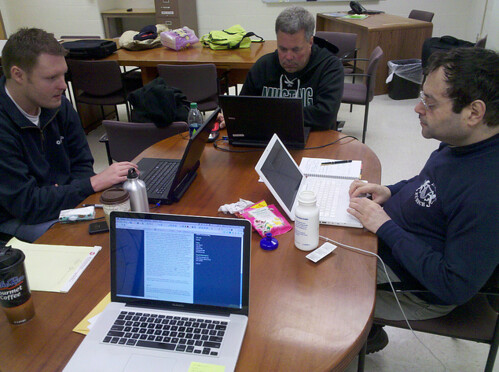Yesterday the world heard from CERN the announcement of a remarkable preliminary finding: that neutrinos arriving at the OPERA detector seem to be showing up too early…about 60 nanoseconds too early. That doesn’t sound like much of an offense. But that 60ns early arrival corresponds (very roughly) to the neutrinos being more than ten yards further along in their journey than they could have possibly traveled in that time frame, if Eistein and lots of subsequent physics is right that the speed of light is an upper limit on how fast anything can travel. And the early arrival seems especially well documented, with more than 10,000 events in a context where the distance of the more than 700 km trip is known to within 20 cm and the timing to within 10ns. So the offense seems real, and seems to challenge a central tenet of modern physics. This interpretation seems unlikely to everyone, but very serious efforts to interpret the measurement in some other way have so far not succeeded; this is at least part of the reason why the experiment opened up their results to the world, so that others might help to find an alternate interpretation. So far, no one has. So the OPERA announcement is interesting news in itself.
I had a chance to watch the announcement live (now here on video) from CERN with three high school physics teachers at Mounds View High School in Minnesota. We were gathered in an I2U2 CMS e-Lab workshop, and were scheduled–not kidding, here–to do an overview of the “big questions” in particle physics at that very hour, which we accomplished differently than expected by watching 90 minutes of the OPERA announcement. These teachers (the four of us) are all QuarkNet teachers, participants in a program designed to connect high school teachers with high energy physics. I cannot imagine a single snapshop which better testifies to the success of QuarkNet than the image of four teachers engaged in a professional development activity in a high school setting, their scheduled review of big physics questions being set aside for genuine participation in a major announcement from CERN.

These teachers had interacted sufficiently with particle physics in recent years to absorb–drinking from the hydrant though we were–the main thrust and many of the details of the 90 minute modestly technical presentation to the world’s high energy physics community. In fact, these teachers are part of that community in a broad but very real sense. They could hardly wait to share the news in their classrooms, thus inviting students into participation in STEM community as well. QuarkNet has made research in high energy physics, the core activity of the particle physics community, look good to high school teachers: we were spellbound by the presentation, and wouldn’t have wanted to be doing anything else at that very moment. Culture makes what is good, look good. That’s just what QuarkNet has made happen for teachers, and for this group of the four of us in particular. The CMS e-Lab is one strategy for making it happen for students, too.
